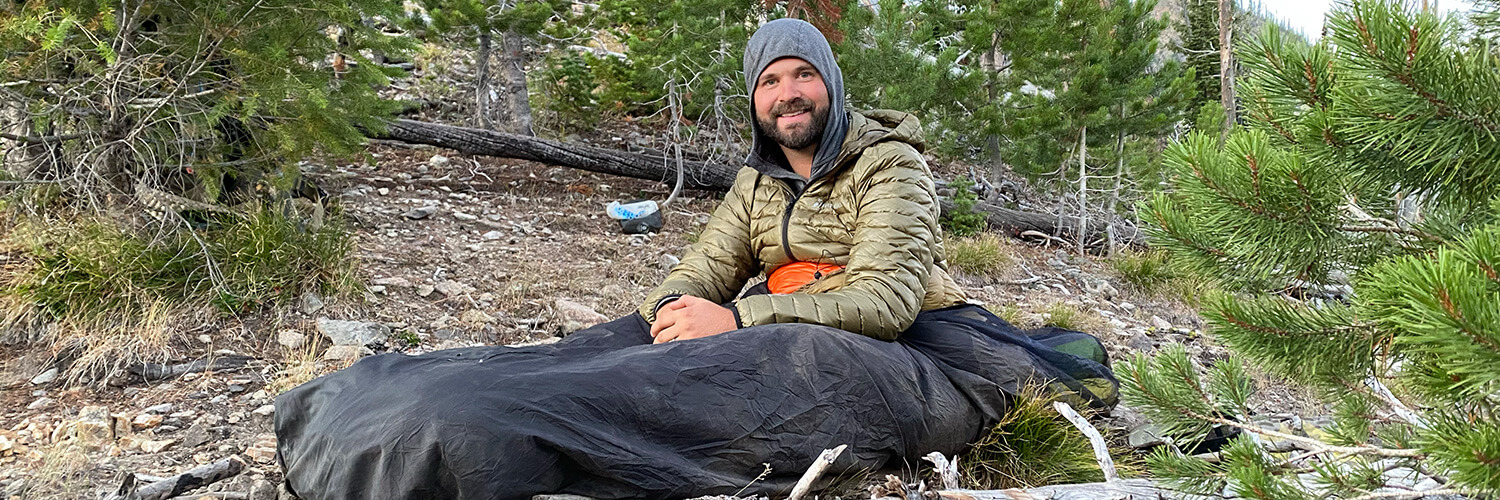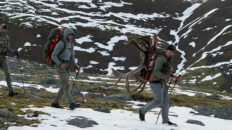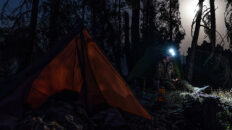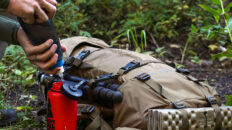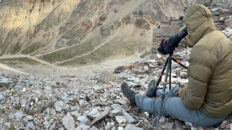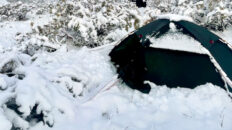Unlike the day hunter, the multi-day backpack hunter carries a shelter and sleep system that allows them to live in the backcountry for days at a time.
A “sleep system” is used inside your shelter to provide temperature regulation and comfort, enabling you to sleep well and rest up for the next day’s adventure.
The 3 key components of a sleep system are: a sleeping bag or quilt, a sleeping pad, and a pillow.
In addition to watching the video (above, or on YouTube), Mark & Steve also recorded an in-depth podcast conversation about sleep systems for backpack hunting…
Header Photo: Steve wakes up from his bivy on a Bighorn Sheep hunt in the Frank Church Wilderness
Key Concepts
- A sleep system should be considered with your shelter choice, but don’t think that you have to have different sleep system options if you use different shelter options.
- The clothing you pack should be a consideration for your sleep system, especially when you are considering the temperature rating of your sleeping bag/quilt.
- Quilts have clear advantages over sleeping bags for weight savings, versatility, performance, price, and more. But they do require some intentionality to be used effectively.
- Answers to common questions/objections about quilts, including whether to have a fully open quilt vs a quilt with a sewn foot box, how to manage heat loss at the head since quilts do not have hoods, and more
- How to eliminate drafts with quilts, and the different types of quilt-to-pad attachment systems
- Choosing between natural down and synthetic insulation for sleeping bags and quilts, and understanding the differences between the insulation types
- Understand the “fill power” rating of down insulation and an explanation of what you get from a higher fill power (such as 850), compared to a lower fill power (such as 650)
- How to compare the specs of down sleeping bags and quilts and interpret those specs to make an informed buying decision
- How to care for and store a down sleeping bag or quilt to get the best performance and life out of your sleeping gear
- The importance of a sleeping pad’s R-value, how that value is determined, and what it means for you
- Why sleeping pad thickness isn’t the only factor in a pad’s comfort and support and how to evaluate the comfort of a sleeping pad
- Sleeping pad valve styles and inflation methods, and our favorite types and methods
- The non-gear elements that affect your warmth when sleeping in the backcountry
- The value of sleep and why you may not want to go ultralight with your sleep system, especially on extended hunts
- Why a dedicated pillow is part of a sleep system and no longer an optional “luxury item” in our packs
- Tips and tricks to improve sleep quality in the backcountry including medications/supplements, nutrition/hydration strategies, and more
Gear Links
Here are links to some of the items mentioned in the video and podcast above. The Experience Project is 100% free from advertisers, sponsorships, or partners, so these links reflect the gear we have independently chosen and used for multiple years on our backcountry adventures…
- Katabatic Alsek 22 Quilt
- Enlightened Equipment Enigma Quilt
- Sea-to-Summit Aeros Down Pillow
- Therm-a-Rest NeoAir Xlite NXT Sleeping Pad
- Therm-a-Rest NeoAir XTherm NXT Sleeping Pad
- Sea-to-Summit Comfort Plus Sleeping Pad
- Katabatic Gear Pinon Bivy
Have Questions?
We will be doing Q&A in future podcasts and videos, so let us know if you have a question that we should consider discussing.

